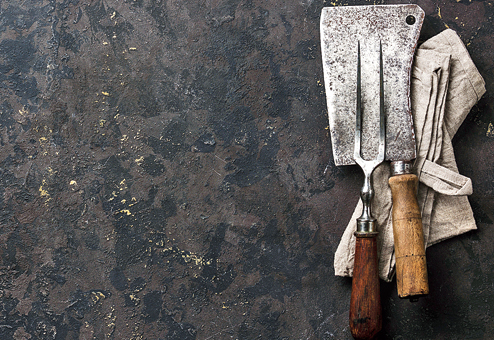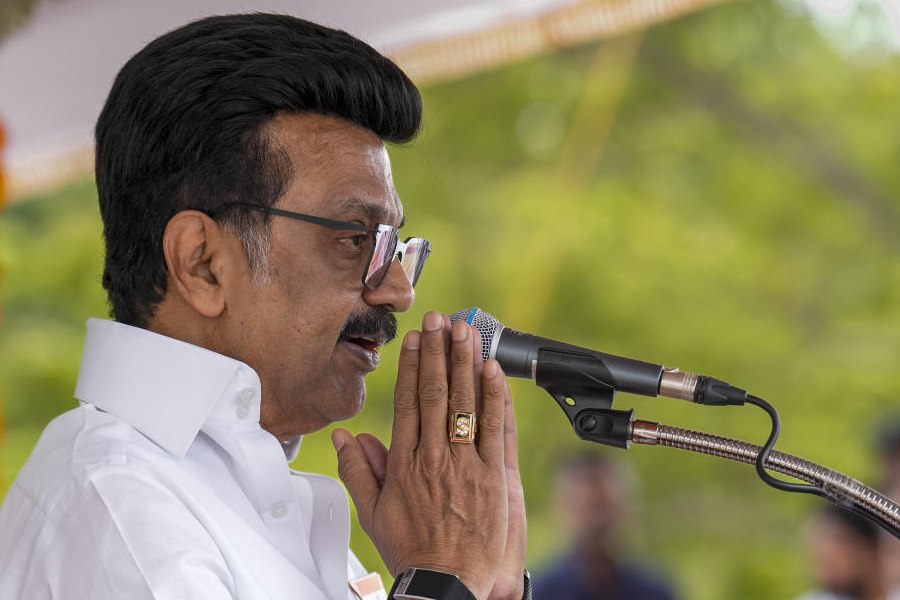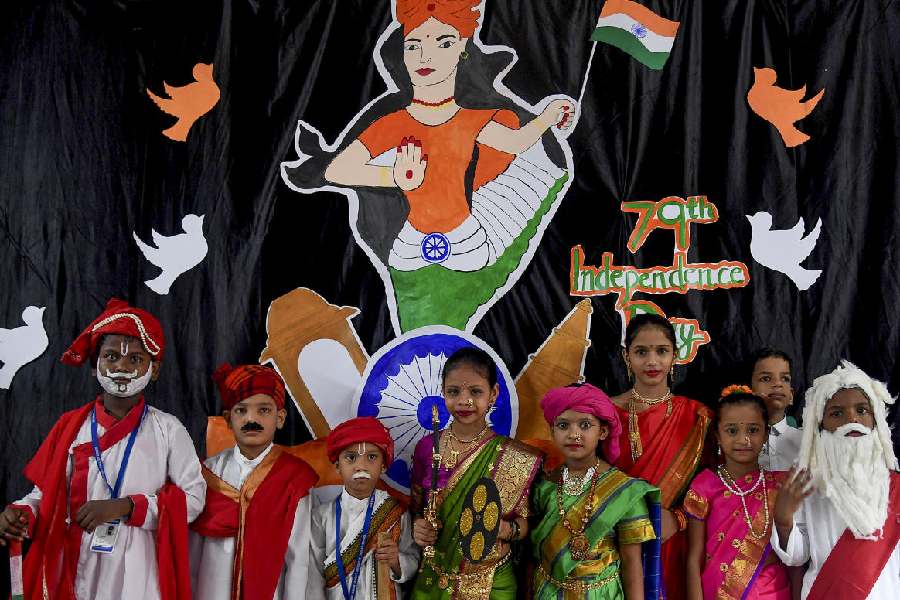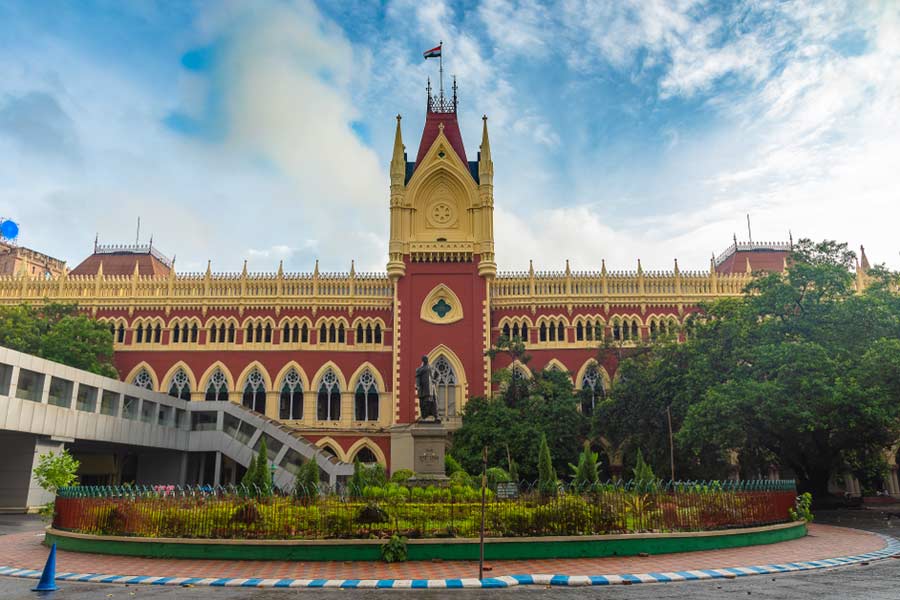
The meat is boiled in water with salt and chilli. No spices, no oil. Leafy vegetables and ginger added as garnish. Sometimes, the fresh meat is roasted on a spit or smoke-dried and preserved in bamboo baskets for future use. That's how the Adi tribe of Arunachal Pradesh likes its favoured table flesh: porcupine.
You heard that right, it's porcupine.
Not very far from Arunachal, in Nagaland, the Ao tribe relishes the wild bear, listed as endangered, on festivals. The priest gets the head of the animal, the rest is devoured by his tribespeople. But pregnant women avoid eating it; the bear is considered a "stupid" animal.

Indians love their meat. Contrary to the notion that Indians are a largely vegetarian people, a 2014 Registrar General of India survey shows that seven out of 10 Indians are non-vegetarians. Chicken, mutton, lamb, beef, fish and crabs are commonplace. From the melt-in-your mouth galauti kebab of Lucknow to the tangy achari murg of Jodhpur to the spicy beef curry of Kerala, the list is endless. But Indians go beyond the conventional culinary delights.
Besides porcupine and bear, they eat frogs, snakes, dogs, rats, rabbits, yaks, turtles, barking deer, worms, quails and snails, pigeons and turtle doves, mud-snappers and mallards, what not.
This fascination for different forms of meat is nothing new. According to Om Prakash's Food and Drinks in Ancient India, flesh of a wide range of animals - horses, rams, barren cows, sheep and buffaloes - was cooked in the Rigvedic period (c.1500-c.500 BCE). There is evidence that peacocks and alligators were eaten during the Satavahana period (271 BCE to 30 BCE).
The culinary map of India is vast and fascinating. "It's a myth that Indians are vegetarians," says foodie and food historian Pushpesh Pant. "The quantum of meat eating in India is influenced by the economy, climate and the habitat we stay close to." He adds an essential caveat: "A lot of endangered birds are eaten in India. For example, quail and partridge meat are banned in our country but people eat them in Bhopal, Hyderabad and Awadh."
We are serious about what we eat, or abstain from, so serious we can kill over them. Here's a catalogue:
Porcupine: The Indian porcupine, about 32-inches long with a seven-inch tail, is eaten by the Adis of Arunachal Pradesh, Kathkaris of Maharashtra, Tiwa hunters of Karbi Anglong, Assam, and in Bihar. Killing a porcupine is tough because of its sharp quills but its white meat is soft and succulent.
Bear: Apart from the Ao tribe of Nagaland, the Purums of Manipur - settled mostly in Chandel district - also eat bear. They devour shong-amei-but, a curry made out of the entrails of the animal, especially during festivals.

Mithun:The tender meat of mithun, or bison, is eaten by the tribals in Arunachal Pradesh, Nagaland and Mizoram. It is the state animal of Arunachal and is the most prized dowry in the state's Adi tribe weddings. It is sacrificed on the wedding day by the bride's brother and then portions of meat are distributed among the villagers. The head of the animal is often relished with opo (rice beer).
Rabbit/hare: Rabbit eating is popular in Tamil Nadu, Kerala and Bihar. In fact, it was once promoted by the Bihar government. In 2011, Bihar's former animal husbandry and fisheries minister and BJP leader, Giriraj Singh, urged people to eat rabbit because it is low on fat and high on protein.
Rabbit, which is a game meat, is also part of the Jodhpuri royal cuisine. The succulent khud khargosh (rabbit meat cooked underground) is eaten during the summers when the hare is lean.
Pig: Pork is widely eaten in Manipur, Mizoram, Chhattisgarh, Nagaland, Arunachal Pradesh, Tripura, Goa and Karnataka among others. Pork musadang (pork cubes dry roasted with green chillies) and Chunga Bejong (spiced pork served in bamboo cooked in wood fire) are dished out in Tripura homes. Goans love their vindaloo and sorpotel especially during Christmas.
Boar: People in various parts of the country go pig-sticking for sport. In Rajasthan, boar spare ribs or bhansalas, are marinated in a mixture of dry yogurt, browned onions, garlic, ginger, coriander, red chilli and kachri (meat tenderiser) before being smoked, spitted on skewers, and grilled over hot coals. Boar is widely popular in Himachal Pradesh, Uttarakhand, Punjab, Nagaland, Manipur and Arunachal Pradesh too.
Turtle: Among the Jeru and Cari tribes of North Andaman, there is a turtle-eating ceremony for the girl when she attains first menstruation. Surveys have found that Christians in Kerala also consume turtles while its eggs are eaten by all communities. People in Jharkhand and Bengal also eat turtles, which are now endangered.

Duck: In Assam, Kumurat diya hanhor mangxo (duck meat curry) is a favourite among locals. Cooked with ash gourd and spiced up with crushed black pepper, duck meat has a distinctive flavour. Christians in Goa love their sweet and sour duck curry. The Wanchos of Arunachal Pradesh relish duck meat. In Kashmir, they have it roasted on an open fire, or curried. It is eaten in Bengal and Bihar as well.
Dog: In Nagaland and Mizoram, black dog meat is part of the regular diet. It is eaten for its punchy taste. The spices they use are Naga pepper ( mejinga), Naga mircha and bamboo shoot.
Frog: Frog legs are a delicacy among the Lepchas of Sikkim. Prepared in multiple ways, it is believed that frog legs can cure various stomach related ailments. In Naga kitchens, frogs are cooked till dry with Naga pepper, ginger, garlic and Naga chilli. Some love their meat with anishi (a preparation made of dried yam leaves). Frogs are eaten when one is injured because locals believe it helps heal faster.
Monkey: It would be wrong to create an impression that you could walk into a restaurant in Kohima and order a plate of monkey brains but monkey is eaten in some parts of Nagaland, and also Arunachal Pradesh.
Rats: The high protein patal bageri (rat meat) is popular among the Musahars, the rat-eating community of Bihar, Jharkhand and Uttar Pradesh. In fact, in 2008, Bihar's former chief minister, Jitan Ram Manjhi, who hails from the same community, tried to popularise rat meat in restaurants.
For the Adis of Arunachal, rats are a must on the menu in any festival. For them, the most delicious parts are the tail and legs. The Gonds and Bhumias of eastern Mandla, Madhya Pradesh, too eat rat legs.
Elephant: Some research papers suggest that the Adis eat elephants as well.
Yak: Yak meat is naturally lean and around 97 per cent fat-free. This red meat, which is high in protein and low in calories, is consumed by the Sulungs of Arunachal Pradesh, and also by Ladakhis and Sikkimese. The latter eat yak blood cubes too as a snack. It is made by drawing around 0.25 kilogram of blood from yak, poured into a pan and boiled on a slow fire until the blood solidifies. Then it is cut into cubes and hot butter and white sugar are added to it.

Quail: Jodhpuris love roasted quails marinated with a melon-like fruit of the kachri plant that grows wild in the desert. The Maharajas of Rampur, the descendants of Nawab Raza Ali Khan, also keep bater ki biryani in their royal cuisine. The Chettiars of Tamil Nadu fry quails to make their crispy and spicy, " kada fry".
Red ant: The sour red ant chutney is known as chaprah in Bastar. And in Jharkhand, especially in Chaibasa, it is known as demta (local word for ant). The ants are cleaned and cooked in a mix of fresh tomato, garlic and chillies and tossed with onions in oil. The mix is dried in the heat before serving.
Monitor lizard: In 2003, a drug addict rickshaw puller from Amritsar came into news when he ate lizards to get a high but for a section of tribes in Assam and Kerala, monitor lizard is a part of the diet.
Insects: In a 2013 book, Edible Insects: future prospects for food and feed security, the Food and Agriculture Organisation stated that insects could be a viable replacement for meat in the event of a food shortage over the next century. Bodos consume many insects such as caterpillars, termites, grasshoppers, crickets and beetles. Even the Nagas consume over 42 different species of insects.
Snakes: India is known to be a land of snake-charmers but there are tribes who eat snakes. Recently, a man from Jharkhand's Harmu village in Lohardaga hit the headlines when he chewed and swallowed a snake shortly after it bit him. Some studies say snakes are eaten in Nagaland too.
Squirrel: The Malayan giant and orange-bellied squirrels are hunted in Ziro valley of Arunachal Pradesh for its meat. They are had roasted.
Peacock: The Bhumia tribe of Madhya Pradesh eats flesh of peacocks. But, of course, they commit a crime if they do; the peacock is our national bird.
We also eat a lot of crow, but of that, another day.











